Unpacking the Facts
Shipping container homes have gained popularity as an alternative living solution, offering a blend of sustainability and modern design. Their sturdy construction, a result of being designed to withstand the rigors of sea travel, prompts a question on their safety during natural disasters such as earthquakes.
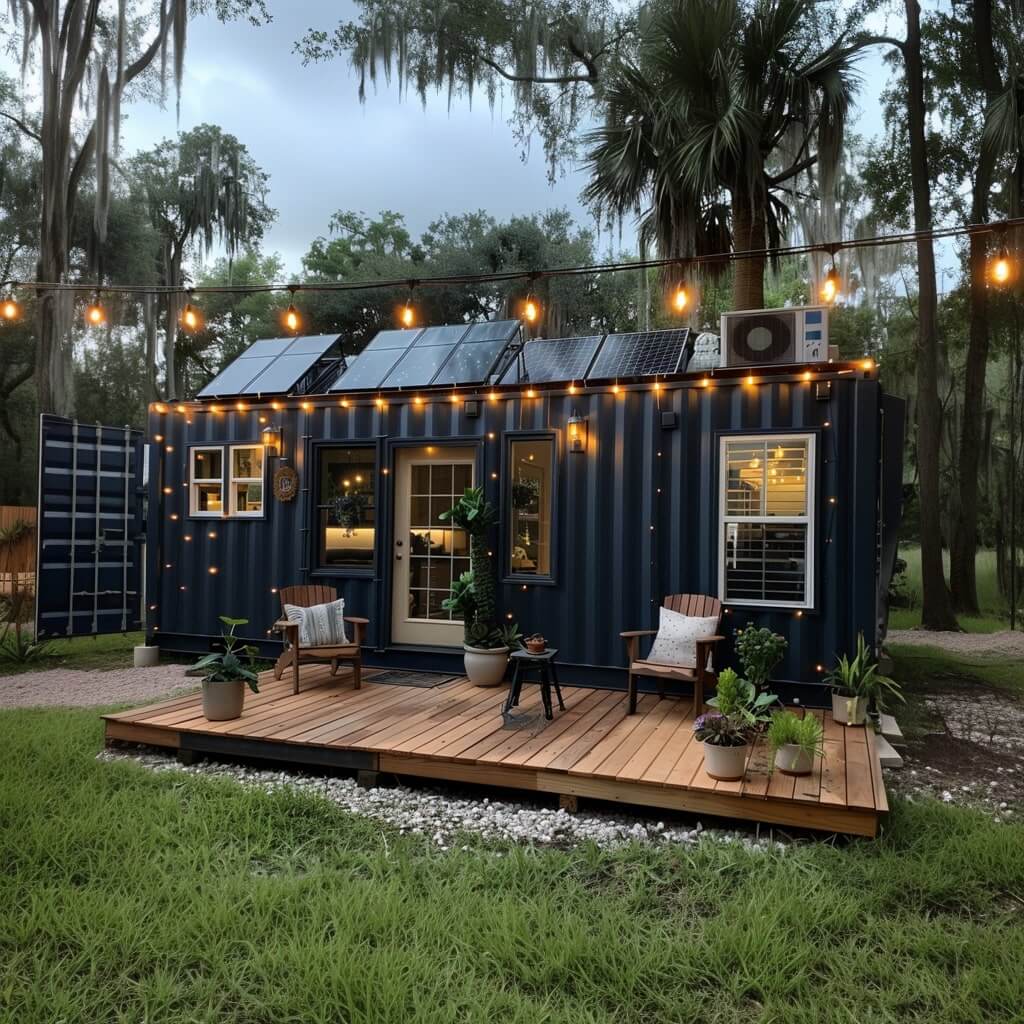
Given their robust steel structure, shipping container houses show potential against earthquake-related stresses. The inherent durability of shipping containers might provide a level of protection during seismic activities, assuming they are properly engineered and anchored to the foundation. However, the level of safety they offer is contingent upon various factors including the design, construction methods, and the adherence to local building codes that consider seismic activity.
Understanding the level of earthquake resilience provided by container homes requires examining the modifications made during the construction process.
Construction details like the joining of containers and the incorporation of additional reinforcements play a critical role in their stability.
Proper floor replacement and the installation of energy-efficient windows and doors warrant attention, not only for durability but for the overall safety and performance of these steel dwellings during an earthquake.
Fundamentals of Shipping Container Homes
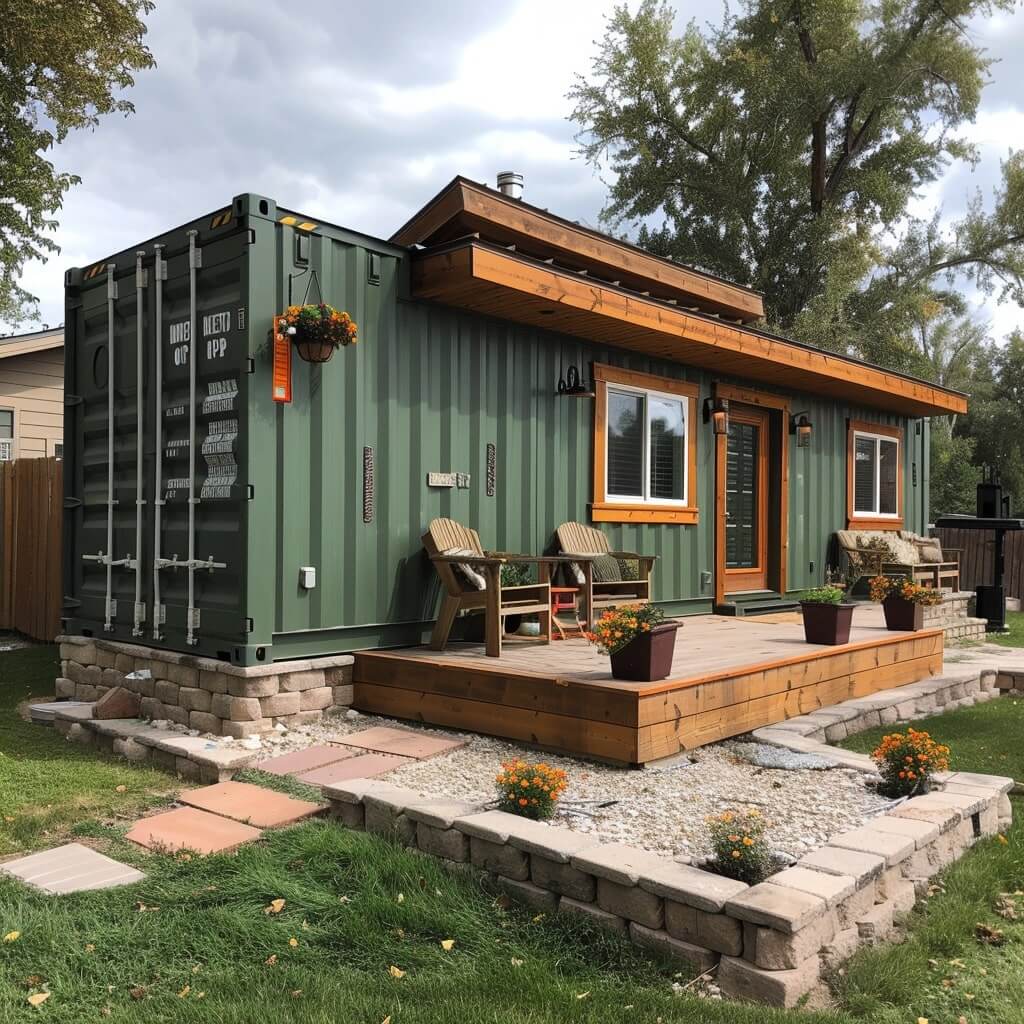
Shipping container homes are evolving into a popular choice for alternative housing, offering sustainability and robustness. Their unique characteristics address some of the housing industry’s most pressing demands in an innovative way.
Defining Shipping Container Homes
A shipping container home is a type of housing structure fashioned from steel shipping containers, which are the same units utilized in the international transportation of goods. These containers are designed to be stackable, durable, and weather-resistant, making them suitable for constructing modular and customizable homes.
A container home can vary from a simple single container to a luxurious multi-container design, often incorporating recycled materials in the build.
Benefits of Shipping Container Homes
One of the most prominent benefits of shipping container homes is their affordability. The cost of a container home is typically lower than that of traditional construction due to the repurposing of steel containers.
In terms of strength, they are known to withstand harsh conditions due to their original purpose for ocean freight, thus they possess an innate resilience against elements such as extreme weather.
Sustainability and eco-friendliness are key attributes that make shipping container homes appealing.
By reusing steel containers, these homes reduce waste and utilize materials that might otherwise contribute to landfill.
Furthermore, the option to install energy-efficient windows and [maximize energy efficiency] greatly enhances their sustainability profile.
Additionally, they offer significant flexibility in design and can be relocated more easily than traditional homes, adhering to the present-day needs for adaptive living spaces.
Structural Characteristics and Earthquake Resilience

Shipping container houses are becoming increasingly considered for earthquake-prone areas due to their structural characteristics.
They are fabricated from steel, possess inherent strength, and when designed with seismic activity in mind, can provide a level of earthquake resilience.
Steel and Its Properties
Steel is the primary material used in the construction of shipping containers. It is heralded for its high strength-to-weight ratio, making it an excellent material for structural integrity in seismic events.
The durability and malleability of steel also allow it to absorb and redistribute seismic energy, which is crucial in maintaining the integrity of the structure during earthquakes.
Design and Reinforcement
Key to the seismic resilience of container homes is their design and reinforcement.
Strategic placement of shear walls, installation of reinforced framing, and the consideration of container connections all contribute to the earthquake resistance.
Incorporate cross bracing and moment frames within the design can significantly enhance the structural integrity of shipping container houses.
Foundation and Stability
The foundation is a cornerstone of earthquake resilience.
A well-anchored foundation ensures that the structure remains stable during tremors.
Shipping container homes require strong and often flexible foundation systems, such as pier foundations or mat slabs, which can absorb seismic shocks and prevent the structure from toppling or shifting due to the movement of the ground.
Container Home Design and Planning

When planning for a shipping container home, key considerations include customization to fit one’s lifestyle, strict adherence to building codes for safety, and ensuring proper insulation and climate control for comfort.
Customization and Layout
Container homes offer a high level of customizability in terms of layout.
Floor plans can be crafted to match individual preferences and living requirements.
Containers can be stacked and combined in various configurations, creating possibilities for both simple and complex designs.
They can incorporate everything from simple studio-style layouts to multi-room family homes with dedicated areas for living, sleeping, and working.
- Single Containers: Often used for studio or single-room layouts.
- Multiple Containers: Can be joined for larger homes with multiple rooms.
Compliance with Building Codes
Adherence to relevant building codes is critical for the structural integrity of container homes. This ensures they are safe for occupancy, particularly in regions prone to earthquakes.
Each locality has specific requirements for construction practices and materials, including how containers should be reinforced and anchored to their foundations.
- Structural Modifications: Must meet or exceed local seismic safety standards.
- Permitting Process: Involves inspections to verify code compliance.
Insulation and Climate Control
Containers are made of steel, making insulation a crucial factor for climate control.
Without proper insulation, the interior can be susceptible to extreme temperatures.
Spray foam insulation is often recommended for its ability to create a tight seal and improve energy efficiency.
Additionally, integrating a robust ventilation system is necessary to maintain air quality and manage temperature variations.
- Insulation Types: Spray foam, panels, blanket insulation.
- Ventilation Systems: Crucial for air circulation and moisture control.
Sustainable Features and Eco-Friendliness

Living in shipping container homes offers a distinctive advantage for sustainability through their inherent ability to repurpose materials and adapt to eco-friendly enhancements.
Energy Efficiency and Insulation
Shipping container homes are often praised for their potential in energy efficiency, thanks in part to the option of integrating foam insulation.
Properly insulated, these homes can maintain comfortable temperatures with less energy consumption, thus lowering the energy usage.
The insulation is crucial as the metal of the containers conducts heat; hence, effective insulation is essential to prevent heat loss during winters and keep the interiors cool in summers.
Use of Renewable Energy Sources
The incorporation of renewable energy sources is increasingly common in shipping container homes.
Installing solar panels leverages a green source of energy, cutting down on the reliance of fossil fuels and the home’s carbon footprint.
The modular nature of these homes allows for easy addition of eco-friendly options including small wind turbines or solar water heating systems, further enhancing their sustainability.
Reducing Carbon and Ecological Footprints
By reusing shipping containers as the structural framework for homes, a substantial amount of material is recycled, reducing the demand for new construction materials and thus the ecological footprint.
The carbon footprint of building a container home is also generally lower compared to that of traditional construction, as it decreases the need for such extensive resources.
Not only does the repurposing of containers minimize waste, but it also lessens the overall environmental impact of new construction.
Safety Considerations and Natural Disasters

When evaluating the safety of shipping container homes, it’s important to consider their performance during natural disasters such as earthquakes and extreme weather.
Their durable construction and material choices play a pivotal role in their resilience.
Protection Against Earthquakes
Shipping container homes have a reputation for having a sturdy structural framework, which is capable of withstanding the forces of low to moderate earthquakes.
This is primarily due to their original purpose of withstanding harsh conditions during transport. However, their actual performance in an earthquake can vary greatly depending on the foundation they are set upon, and how the containers are connected together.
Properly anchored and reinforced, they can provide significant protection against earthquakes.
Withstanding Extreme Weather
The use of Corten steel, which is known for its corrosion resistance, makes shipping containers particularly good at withstanding extreme weather conditions. In areas prone to hurricanes, the aerodynamic properties and robustness of these containers may offer enhanced durability compared to traditional housing. Nonetheless, key modifications and reinforcements are necessary to further improve their extreme weather resilience.
Material and Maintenance Aspects
The maintenance of a shipping container home is critical for preserving its safety features. Over time, the corten steel may develop rust if not properly maintained, which can compromise its structural integrity.
Regular inspections and maintenance, which include checking for rust and applying protective coatings, are essential preventive measures. Addressing issues promptly helps to ensure the longevity of the home and its capacity to endure harsh weather conditions.
Economic Aspects of Container Homes
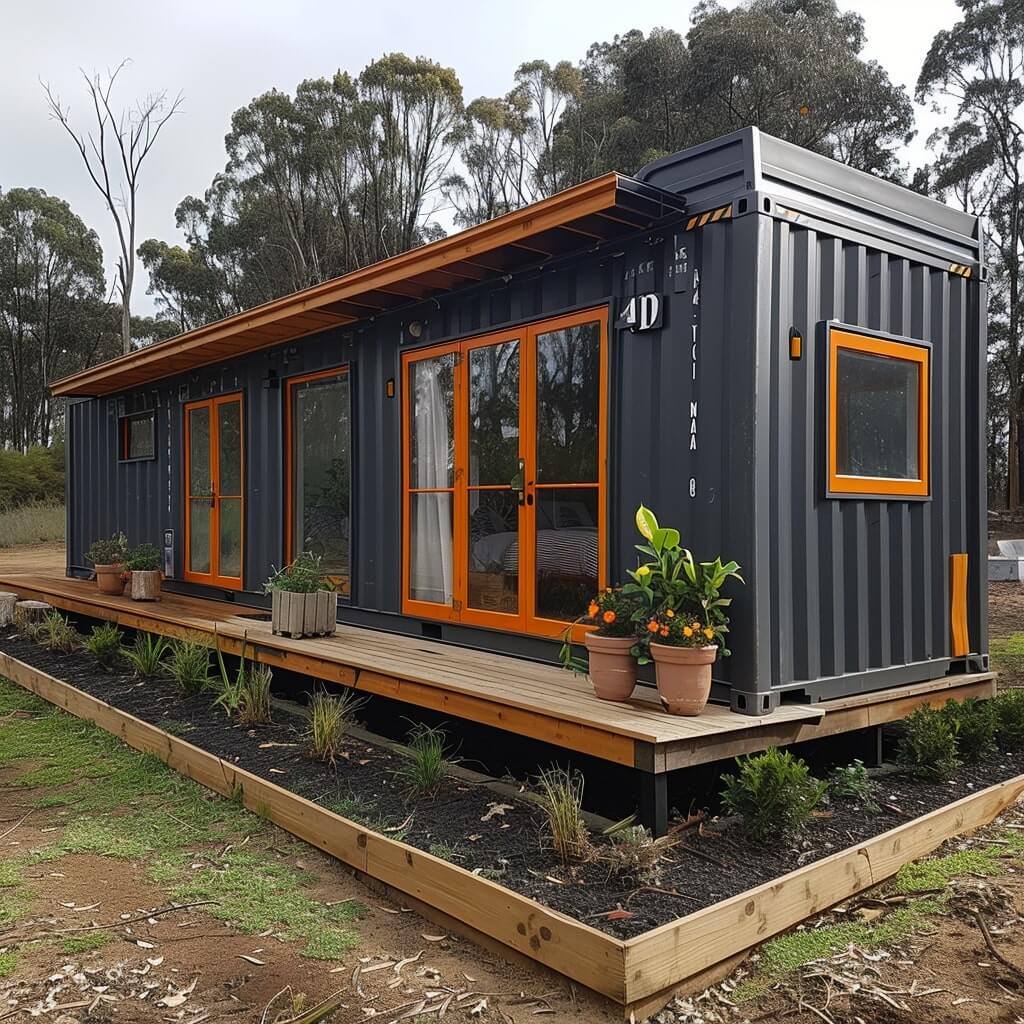
The economic landscape of housing is witnessing a shift with the emergence of container homes as a cost-effective alternative. This section discusses their affordability, cost comparisons with traditional housing, and the intricacies of budgeting for construction.
Affordable Housing Solutions
Shipping container homes represent a beacon of affordability in the housing market. They offer a viable path to homeownership for those seeking to bypass the soaring costs associated with traditional construction. Initiatives to promote affordable housing often include these structures due to their lower price points.
Containers that are retired from service in shipping can be transformed into living spaces for as little as $10,000, a fraction of the cost of conventional homes.
Comparison with Traditional Housing
When compared to traditional housing, shipping container homes generally require a reduced investment.
The cost-effectiveness stems not only from the initial purchase of the container but also from the subsequent construction process.
Building a conventional house can accumulate expenses in materials and labor, whereas containers come as a prefabricated structure with significant savings in these areas. The construction costs are also lessened due to the smaller size and the reduced need for foundational materials.
Budgeting and Costs
Budgeting for a shipping container home involves evaluating the overall costs, which extend beyond the initial purchase of the container itself.
Additional expenses include the cost of land, the modifications needed to make the container habitable, such as insulation, plumbing, wiring, doors, and windows, and any necessary construction permits.
However, a careful budget can lead to significantly lower overall expenses than those typically expected with constructing a traditional house. Additionally, future homeowners can gradually scale their projects, which permits financial flexibility.
Logistics and Legalities
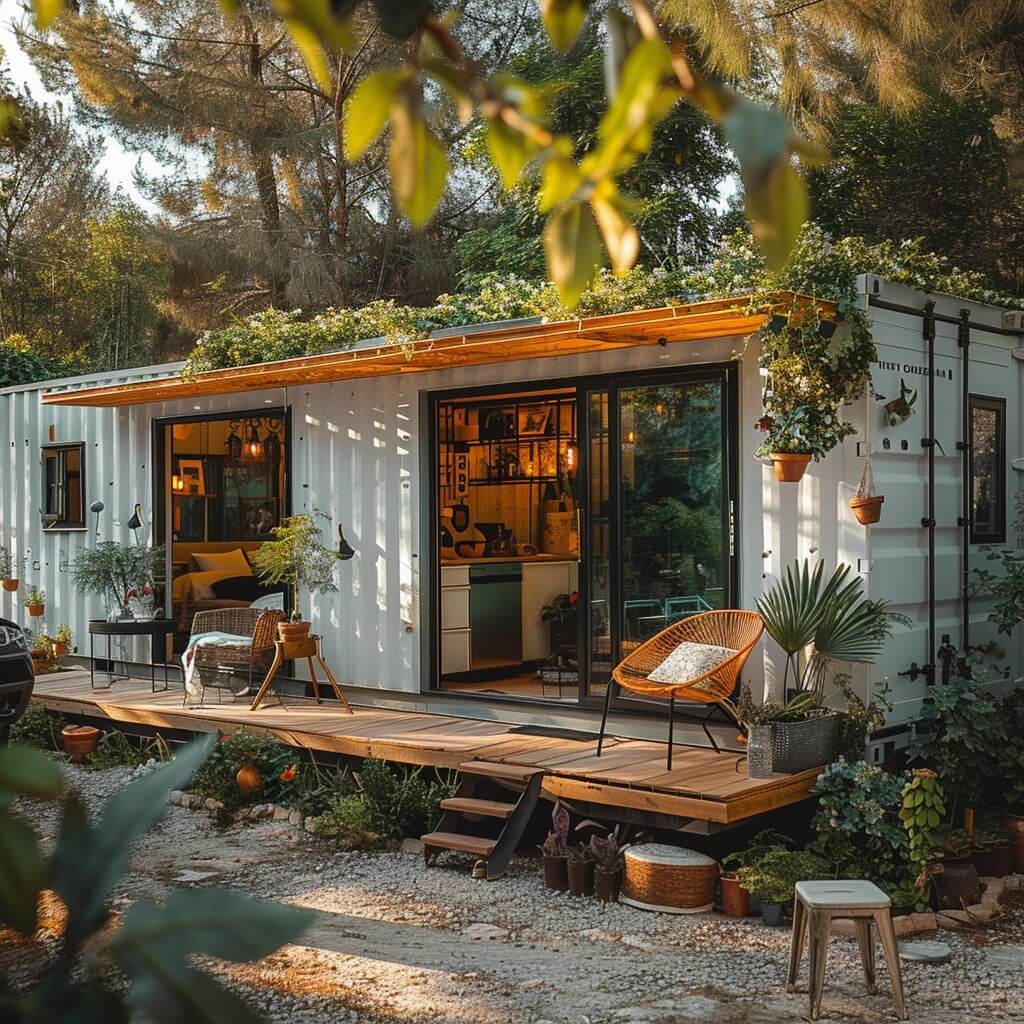
When considering the construction of a shipping container home, especially with an eye towards earthquake resilience, careful attention must be given to the logistics of acquiring and modifying containers, as well as navigating the complexities of local legislation and building codes.
Local Regulations and Zoning
Local regulations and zoning laws dictate where and how shipping container homes can be built. They must adhere to building codes that are designed to ensure safety and compatibility with local standards.
For example, in earthquake-prone areas, structural reinforcements may be mandated to withstand seismic activity. Prospective builders should consult their local building authority to understand the specific requirements, which can include:
- Setback restrictions
- Maximum building heights
- Density regulations
Sourcing and Buying Containers
Sourcing shipping containers involves finding a reliable supplier who can provide containers that are structurally sound and suitable for housing. When buying shipping containers, one should consider:
- Age and condition: New or one-trip containers may be preferable for their lack of wear.
- Size and type: Standard sizes are 20 feet by 8 feet and 40 feet by 8 feet, with high-cube options offering additional height.
- Delivery and placement: Logistics of transporting the heavy and bulky container to the site require planning.
Contractor and DIY Options
Choosing between a contractor or taking the DIY route depends on one’s skill level, budget, and time.
Working with a contractor experienced in container home construction can add a level of assurance, as they should be familiar with:
- Necessary modifications for earthquake resilience
- Integrating containers with traditional construction methods
Meanwhile, DIY enthusiasts can take a more hands-on approach but must be prepared to tackle challenges such as:
- Obtaining the right tools and equipment
- Understanding the intricacies of container architecture
Lifestyle and Community
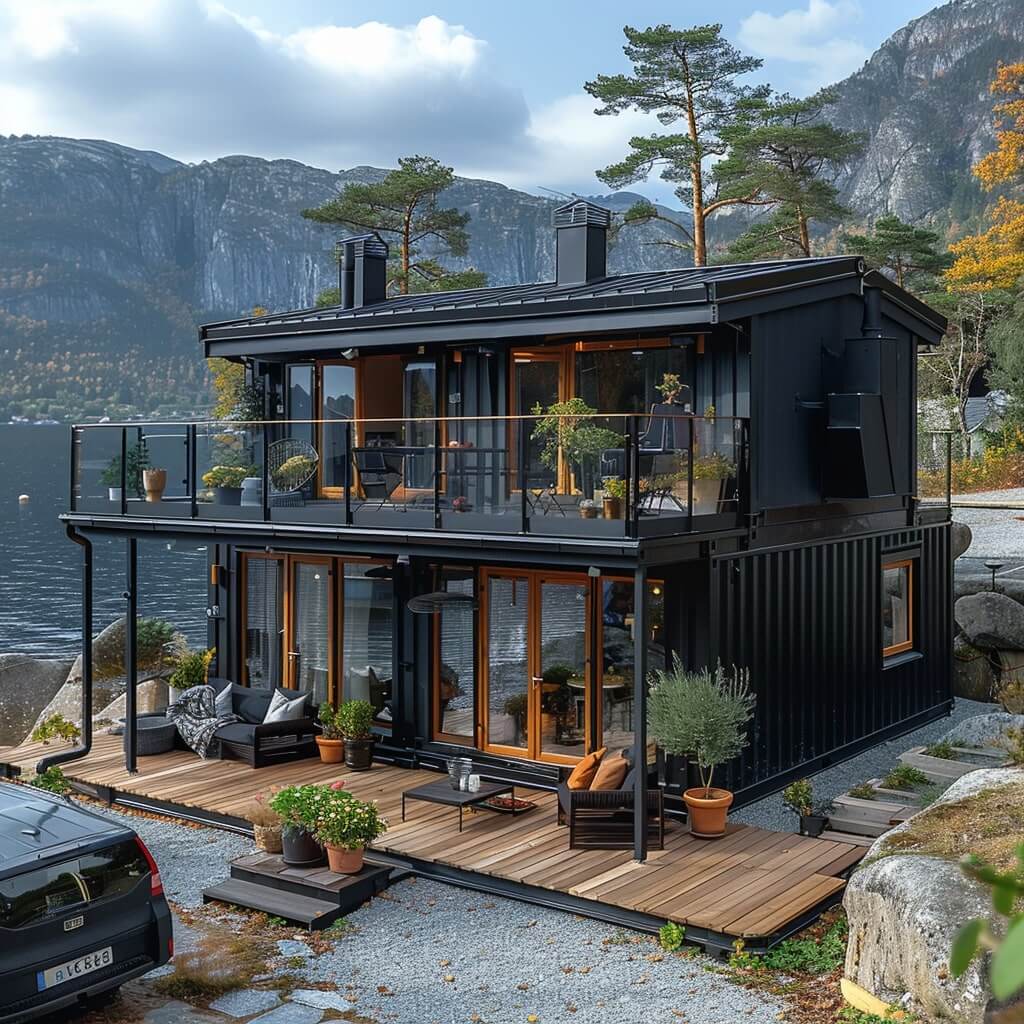
Engaging in the tiny home movement, especially through alternative housing like shipping container homes, leads to a shift in lifestyle and communal dynamics. These changes highlight the trend toward downsizing and reflect growing environmental and socioeconomic awareness.
Tiny Home Movement
The tiny home movement symbolizes a shift towards minimalistic living. It is not just about living in a smaller space; it’s a commitment to reducing one’s carbon footprint and simplifying life.
Shipping container homes, a unique form of tiny homes, inherently support this philosophy by repurposing steel containers and optimizing space. Proponents value the freedom from financial strain and the closeness to nature often afforded by these homes.
Alternative Housing and Downsizing
Alternative housing, including shipping container homes, offers a means of downsizing. People are increasingly transforming containers into unique homes, recognizing the benefits of living within a smaller footprint.
The container home living experience is appealing because it reduces living expenses and discourages the accumulation of unnecessary belongings. It embodies a lifestyle that is both economically savvy and eco-conscious.
Community and Social Considerations
Shipping container homes can also catalyze the creation of close-knit communities based on shared values of sustainability and simplicity.
By choosing container home living, individuals often find themselves among like-minded neighbors, fostering a sense of camaraderie.
The shared experiences in this alternative housing approach can lead to collaborations in community gardens, local events, and communal spaces, building resilient and connected communities.
Technical Details and Building Process
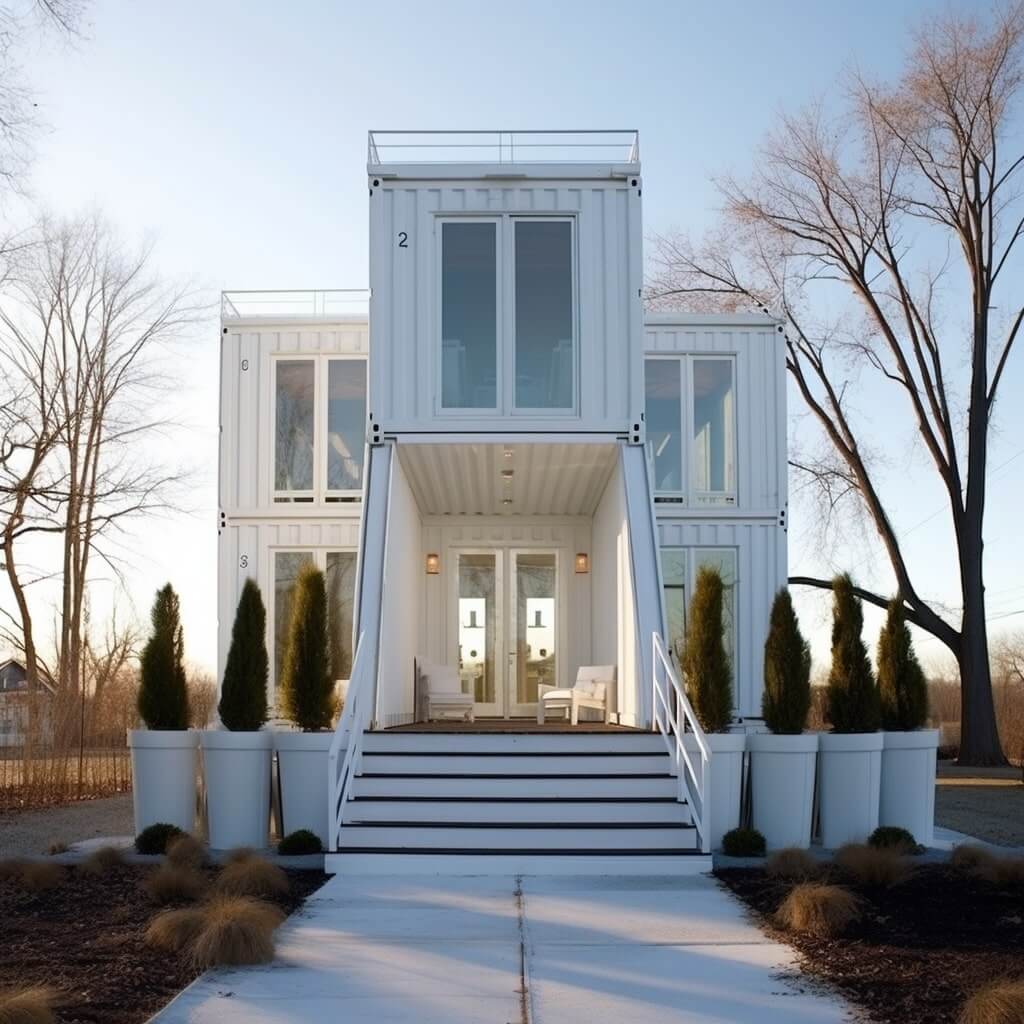
When embarking on the construction of a shipping container home, attention to detail in structural integrity and the installation of utilities is crucial. This ensures the home can withstand seismic events.
Construction Methods and Expertise
Construction of shipping container homes requires skillful handling of materials and familiarity with building code requirements.
The containers themselves often necessitate modifications to meet livability standards, including cutting sections for windows and doors, which must be done carefully to maintain structural integrity.
Plumbing, Electricity, and Fixtures
Proper installation of plumbing, electricity, and fixtures turns a standard shipping container into a functional living space.
Expertise in these areas is vital, as incorrect installation can lead to long-term issues. Plumbing and electricity should be installed in compliance with local codes and standards to ensure safety and functionality.
Structural Reinforcements and Modifications
Shipping containers might need structural reinforcements due to the modifications made for windows, doors, and room layouts, affecting their ability to handle stresses like those experienced during an earthquake.
Key reinforcements might include steel beams and cross bracing to ensure structural performance during seismic events. Modifications must be carefully planned and executed to maintain the container’s inherent strength.
Pros and Cons of Shipping Container Living
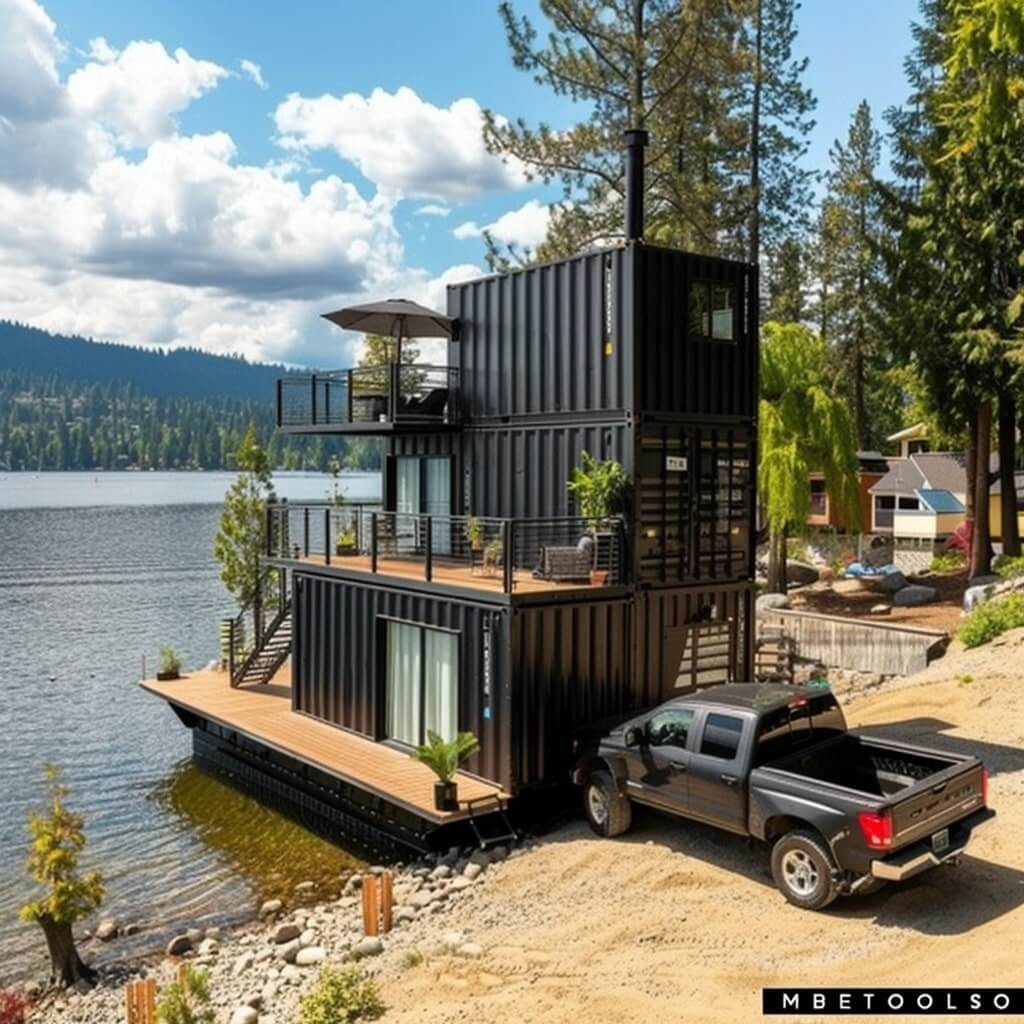
In considering the viability of shipping container homes, potential homeowners weigh distinct advantages like affordability and customization against challenges such as temperature regulation and safety.
Advantages of Container Homes
Affordability: One of the primary advantages of shipping container homes is their cost-effectiveness. Compared to traditional housing, the initial purchase of a shipping container is relatively low-priced, making it a budget-friendly option for many.
Customizable: These structures are highly customizable. Owners have the flexibility to stack and join multiple containers, design creative layouts, and incorporate unique architectural elements.
Energy Efficiency: With the right design considerations, container homes can be quite energy-efficient. Strategic placement of energy-efficient windows and doors can lead to significant savings on energy costs.
Maintenance: Due to their original purpose of transporting goods across harsh environments, shipping containers are durable and typically require minimal maintenance over time.
Challenges and Considerations
Temperature Control: Despite their durability, a major challenge is insulation and temperature control. Without proper insulation, these metal homes can become excessively hot in summer or too cold in winter.
Safety Concerns: Concerns around safety during natural disasters such as earthquakes are critical. While shipping containers are robust, modifications and reinforcing might be necessary to enhance earthquake resilience.
Regulations and Permits: Potential homeowners should be aware that navigating building regulations and obtaining necessary permits can be complex and varies greatly by location.
Space Limitations: While shipping container homes are praised for their customizability, the footprint of a single container is small. This may limit design and living space without significant alterations.
Case Studies and Real-World Applications
Exploring real-world implementations of shipping container homes offers a glimpse into their structural integrity during seismic events. Diverse projects and testimonials provide practical insights into their earthquake resilience.
Successful Shipping Container House Projects
- Project: New Zealand Container House
- Location: Christchurch, New Zealand
- Details: After the 2011 earthquake, New Zealand saw the rise of shipping container houses as a practical, quake-resilient housing option. The containers’ innate strength and their ability to be securely anchored make them highly stable in seismic activity.
- Project: EcoContainer Home
- Location: Santiago, Chile
- Details: Chile, being in a highly seismic zone, has examples of shipping container homes that have withstood significant tremors. The EcoContainer Home utilized reinforced steel brackets for additional stability.
Innovative Features and Additions

When it comes to enhancing the resilience and sustainability of shipping container homes, certain innovative features and additions play a pivotal role. Incorporating these features can elevate a container home from a simple structure to a cutting-edge abode that embodies modern living and preparedness against natural calamities like earthquakes.
Smart Home Technology
Smart home technology is integral to modern container homes, enhancing safety and convenience. Sensors can detect earthquakes early, triggering automated systems to shut off utilities and lock down the home to prevent damage. Moreover, smart systems can manage energy use with precision, integrating with solar panel systems to optimize energy efficiency and reduce reliance on the grid.
Sustainable Living Enhancements
Sustainable living is at the forefront of container home design, emphasizing minimal environmental impact. Easily customizable, container homes often feature additions such as:
- Solar panel systems to harness renewable energy.
- Insulation choices for improved energy efficiency, which keep the home cooler in summer and warmer in winter.
- Water-saving fixtures that contribute to sustainable water management. These enhancements not only support a sustainable lifestyle but also increase the resilience of the home to natural disasters, such as earthquakes, by allowing for self-sufficiency.
Concluding Remarks
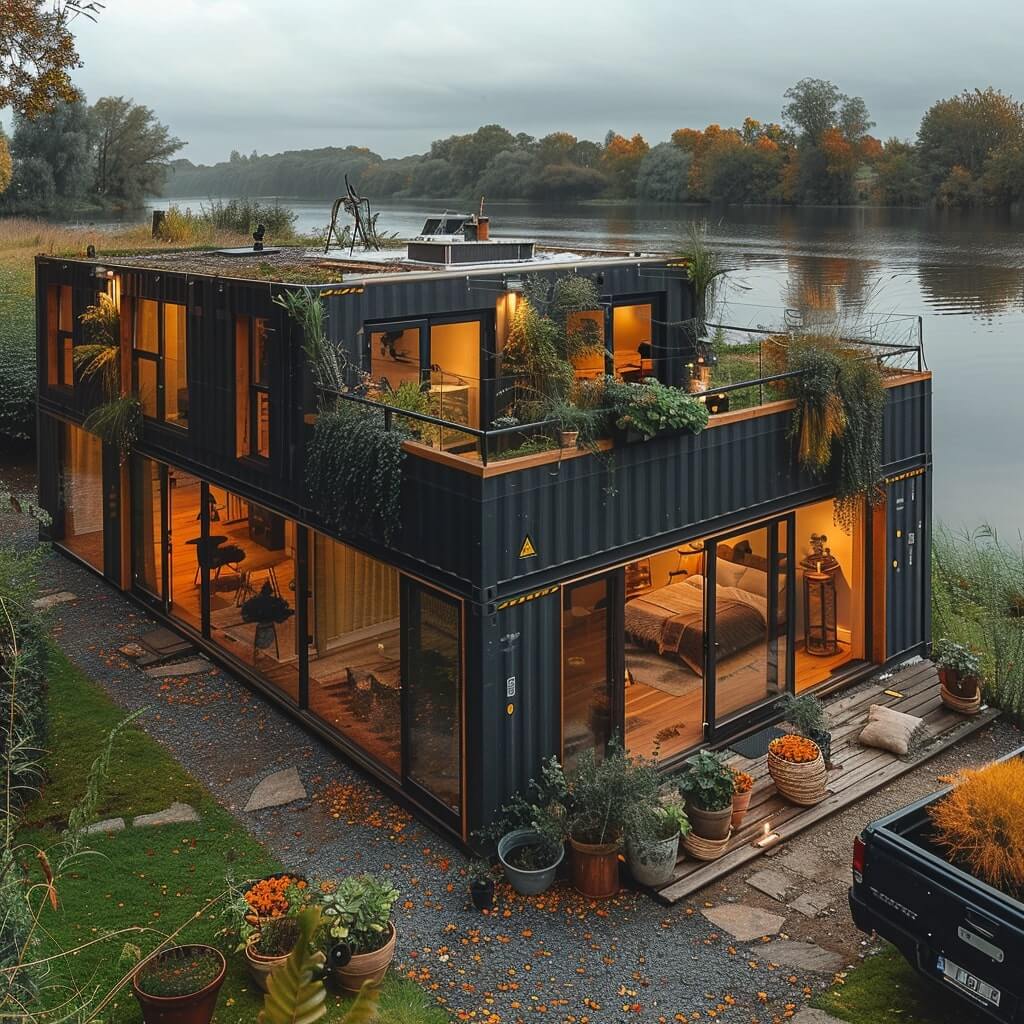
In assessing the suitability of shipping container homes for earthquake resistance, one must consider their intrinsic structural rigidity and durability.
These homes, comprised of heavy-duty steel, have a commendable ability to withstand external stresses. They were able to endure the powerful winds and high waves they encountered during their original use at sea. This characteristic suggests a potential to cope with seismic forces as well.
However, the safety of these structures in the event of an earthquake is contingent on adherence to proper construction methods, particularly in the areas of foundation and anchoring.
A robust foundation is indispensable in distributing the seismic forces and providing crucial stabilization.
While container homes have been praised for their energy efficiency and layout efficiency, it should be made explicit that modifications made to these containers during the transformation process into livable spaces must not compromise their structural integrity.
They require specific reinforcements, especially when containers are stacked or joined, to ensure that the modifications do not leave them vulnerable to disasters like earthquakes.
